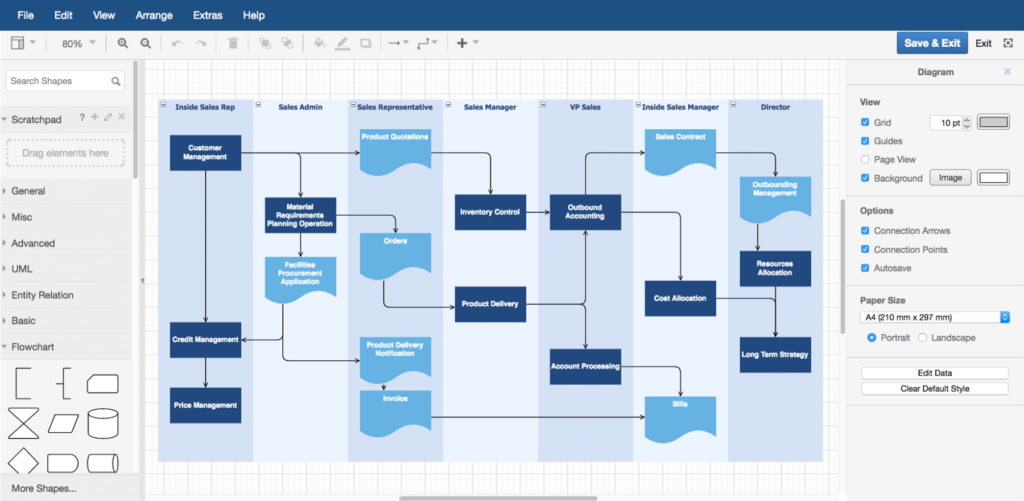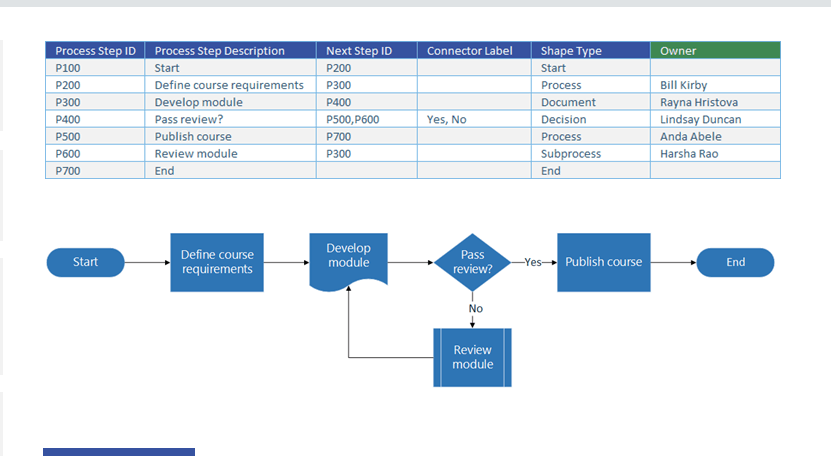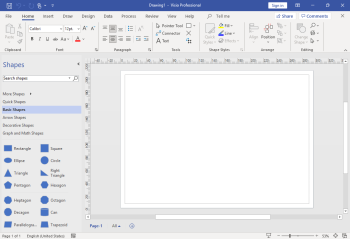If you want your business to be as efficient as possible, you should constantly analyze and improve your processes. Before you can analyze a process, though, you need to have a very clear understanding of it.
One of the easiest ways to really understand the process is to create a process map – that is, a graphical document that represents the flow of the process. To do this right, you need to use the right process mapping tools. Read on to learn about some of the best software on the market!
Top 5 Process Mapping Tools
Until recently, the only way to do process mapping was by hand. i.e. taking a pen, paper, and drawing the process in the form of a flowchart. For business needs of today, however, this just won’t do.
You want to share the process map with your employees, outside consultants, and management. You want to be able to make changes to the document without having to re-print it and hand it out to everyone all over again.
So, you want something digital.
A bit about Tallyfy
Are you looking to automate tasks between co-workers or clients? You've found the right app for that! With Tallyfy - you can automate tasks and business processes - within minutes.
Let's resume the rest of this article!
What is Tallyfy?
Tallyfy helps you document and automate tasks between co-workers and clients
Click here to learn about TallyfyThere’s a bunch of online process mapping tools that do this.
Draw.io

One of the simplest & most straightforward process mapping tools is draw.io.
The software isn’t exactly dedicated to process mapping, but it’s one of the functionalities. You can use the tool to create any kind of diagrams, whether it’s something as simple as a process flowchart, or more in-depth, like the SIPOC diagram.
And the best part? Draw.io is completely free to use. You can create as many graphs as you want without being hit with a paywall.
Pros:
- Super easy to use
- Free for both personal and business use
- Integration with other software such as Confluence
Cons:
- Limited uses for diagrams. You can use the software to create the process maps, but you’ll need to use an internal server to share it with employees
- The software is not dedicated to process mapping. The other tools we mention in this article have a lot more support for creating process maps, specifically.
Microsoft Excel

Chances are, you already know what Excel is. It is, after all, one of the most popular spreadsheet tools that come with the Microsoft Office package. What you probably didn’t know, though, is that Excel comes with several tools that can help you create process maps.
The software costs around $150, but if you’ve bought any Microsoft products, you probably already have it.
Pros:
- If you own any Microsoft products, you won’t have to pay a dime for Excel
- It’s very easy to create basic process flowcharts with the tool
- Your employees already know how to use the tool. You won’t have to gain buy-in to get them to use it
Cons:
- The software is a bit limited when it comes to process maps – you can only use it to create the most basic stuff
- You can’t export the process maps to images, so you’ll have to use and share the Excel document instead of a JPG
LucidChart

Unlike the tools we’ve mentioned until now, LucidChart’s main use-case is to create process maps.
Hence, the tool comes with a lot more features and functionalities that help with process mapping, specifically. For example, it comes with a ton of templates for creating any sort of map – BPMN2, SIPOC, Value stream, you name it.
You can also use the LucidCharts platform to share the maps with your employees (rather than using an internal server). This can end up saving you a lot of both time and effort.
LucidChart pricing ranges from $5 to $20 monthly, depending on the plan.
Pros:
- Flexible pricing
- Tons of process map templates
- Extremely easy to use without any training
- Internal server to store the graphs
- Several export options – JPEG, PDF, etc.
Cons:
- Expensive for large teams – $20 per month + $7 for each user
Microsoft Visio

Unlike Excel, Visio is a dedicated Microsoft tool for creating process maps. Hence, it comes with a lot of additional functionalities.
While the software is excellent for process mapping, it’s more expensive than the rest of the tools we’ve mentioned. The price ranges from $5 to $15 per user per month, depending on what functionalities you’re looking for.
Pros:
- Very powerful process mapping functionalities
- Tons of process templates
- Comes with OneDrive storage to share the diagrams
Cons:
- Runs only on Windows
- Expensive compared to other process mapping tools on the list
- Can’t be used on mobile
Tallyfy
![]()
Tallyfy isn’t exactly a process mapping tool – it’s something much more powerful. Instead of creating a process diagram, you can use the software to create a digital process. Meaning, the process facilitates itself.
Instead of your employees having to communicate tasks, Tallyfy does this for you. When employee #1 is done with the first task, employee #2 is automatically assigned the next task. The software keeps assigning tasks and deadlines until the process is completed.
This means a lot of added benefits. The processes, for example, become a lot faster and more efficient. Or, instead of making a change to a process and having to communicate it with all the employees, you can simply make a change to it through the platform.
Tallyfy comes at a monthly fee of $15 per user per month, but if you take full advantage of the tool, it’s going to be well worth it.
Pros:
- Process tracking. Know how every process in your company is going in real-time.
- Process automation. The processes run themselves without your employees needing to communicate with each other.
- You can store files and diagrams on the server
Cons:
- Can’t be used to create the actual diagrams
- Requires constant use from employees
Process Mapping is a Part of BPM
The main benefit of process mapping is to use it in tandem with Business Process Management (BPM).
BPM is a method involving constant process re-evaluation and improvement, helping you make the organization as efficient as possible. Learn more about Business Process Management – what it is, how it works, and how to use it!

